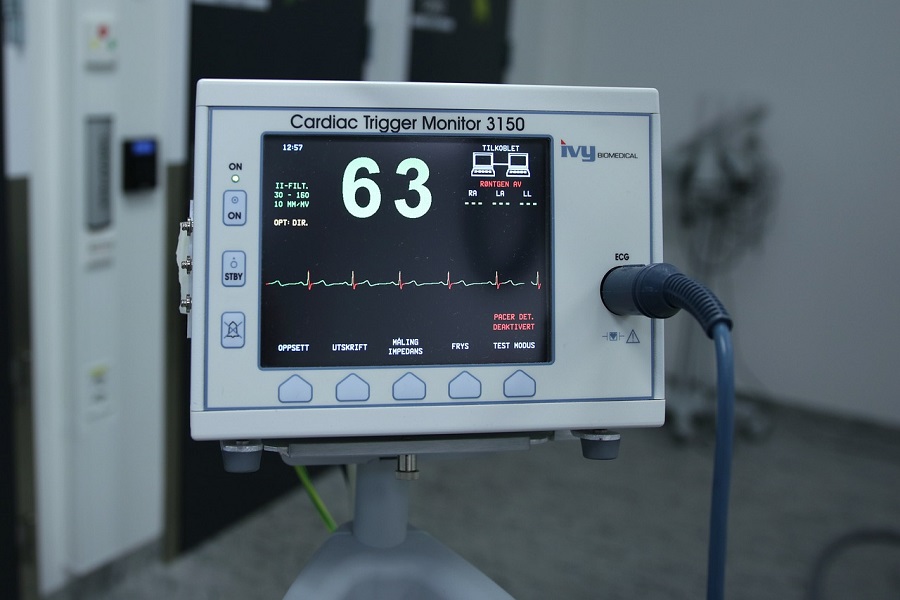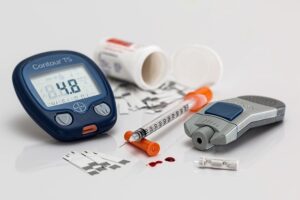Understanding and Monitoring Healthy Heart Rate for Adults
The heart is a remarkable organ responsible for pumping blood throughout the body, delivering oxygen and nutrients to cells while removing waste products. A key indicator of monitoring healthy heart rate for adults is to measure the heart rate, which measures the number of times the heart beats per minute (bpm). Understanding what constitutes a healthy heart rate for adults and how to monitor it is crucial for maintaining overall well-being.
What is a Healthy Heart Rate for Adults?
The optimal heart rate varies depending on factors such as age, fitness level, and overall health. However, in general, a resting heart rate (RHR) between 60 and 100 bpm is considered normal for adults. Athletes or individuals who are very physically fit may have lower resting heart rates, often below 60 bpm, due to the efficiency of their cardiovascular system. Faster than 100 bpm is known as tachycardia, while slower than 60 bpm is referred to as bradycardia.
How to Measure Heart Rate
There are several methods to measure heart rate, ranging from simple manual checks to advanced technological devices:
1. Manual Pulse Check:
Place your index and middle fingers on your wrist (radial artery) or neck (carotid artery) and count the number of beats felt within 60 seconds. This method provides a basic estimate of your heart rate. Do not use the thumb while taking a pulse reading, as you are likely to detect the pulse that exists within your own thumb!
2. Wearable Fitness Trackers:
Devices like fitness watches or smart bands can monitor heart rate continuously throughout the day, providing real-time data and trends over time. These devices often use optical sensors to detect blood flow through the skin. Fitbit is an example of one of these devices.
3. Heart Rate Monitors:
Dedicated heart rate monitors, usually worn as chest straps or wristbands, offer more accurate measurements compared to wrist-based fitness trackers. They detect electrical signals generated by the heart and provide precise readings during exercise or rest.
4. Smartphone Apps:
Various mobile applications utilise the camera and flash to detect changes in skin colour caused by blood flow, allowing users to measure heart rate by placing their finger over the camera lens.
5. Blood Pressure Monitors:
Some modern blood pressure monitors also include a feature to measure heart rate. Users simply need to wear the cuff and follow the device’s instructions. Most pharmacies sell blood pressure monitors for around £20.00 or you can pick one up from Amazon.
6. Blood Oxygen Saturation Readers:
These are great little devices and you can pick one up for £20.00 or less at most pharmacies. You basically clip it on the end of your index or middle finger and after a few seconds, it will give you two readings. The top reading will be your blood-oxygen saturation level and this should be 94% or higher. But there is a second number at the bottom and this will offer you your current heart rate. Be aware that caffeinated drinks, such as coffee and tea, cam affect your heart rate result. Here’s an example of a blood oxygen saturation meter.
Factors Affecting Heart Rate
Several factors can influence heart rate, including:
– Physical Activity: Exercise and physical exertion can temporarily increase heart rate as the body demands more oxygen and nutrients.
– Emotional State: Stress, anxiety, and strong emotions can elevate heart rate due to the release of hormones like adrenaline.
– Temperature: Extreme temperatures, both hot and cold, can affect heart rate as the body works to maintain internal temperature balance.
– Medications and Substances: Certain medications, caffeine, nicotine, and alcohol can impact heart rate, either increasing or decreasing it.
Why Monitoring Heart Rate is Important
Monitoring heart rate provides valuable insights into cardiovascular health and can help individuals:
Track Fitness Progress:
Regular monitoring of heart rate during exercise sessions can gauge fitness levels and track improvements over time.
Identify Abnormalities:
Sudden spikes or irregularities in heart rate may indicate underlying health issues such as arrhythmias or heart disease, prompting further evaluation by a healthcare professional.
Manage Stress:
Monitoring heart rate during relaxation techniques such as deep breathing or meditation can help manage stress levels and promote overall well-being.
Optimise Training:
Athletes and fitness enthusiasts can use heart rate data to tailor their workouts, ensuring they train within the appropriate intensity zones for their goals.
Conclusion
Maintaining healthy heart rate for adults is vital for overall cardiovascular health and well-being. By understanding what constitutes a normal heart rate for adults and employing various monitoring methods, individuals can take proactive steps to optimise their heart health, track fitness progress, and identify any potential issues early on. Whether through manual checks, wearable devices, or smartphone apps, regularly monitoring heart rate empowers individuals to make informed decisions and live healthier, more active lives.
N.B. If you are pretty fit, do not be alarmed if your resting heart rate falls below 60 bpm. I work out four times per week and I hike for four miles on four days of every week. Most of the time, my resting heart rate sits between 54 and 60 beats per minute and I have no other symptoms of a slow heart rate.



